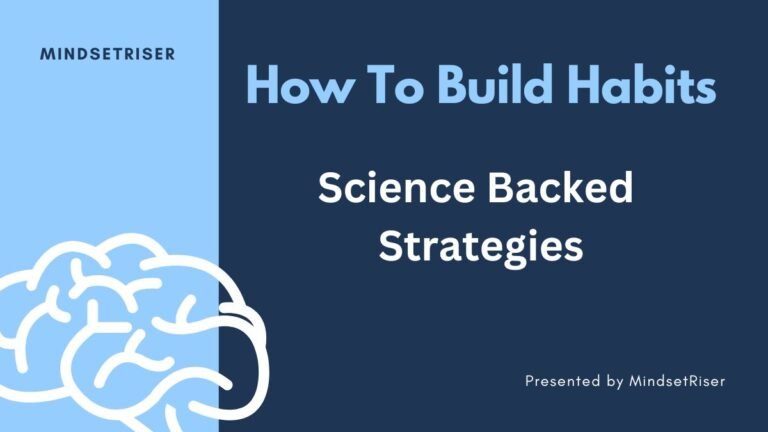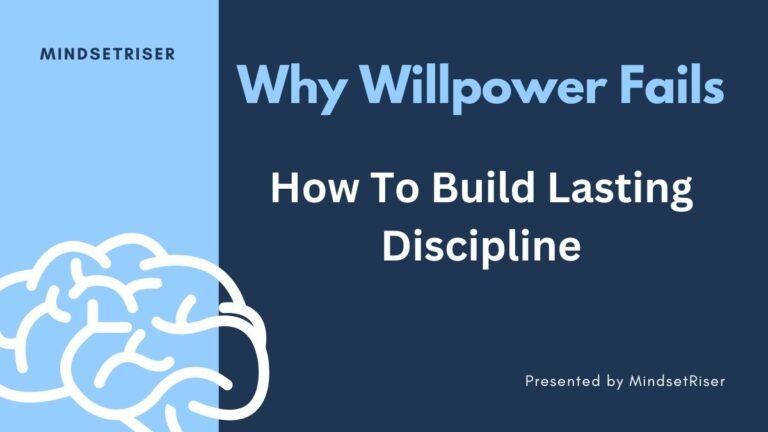Why Most Habits Fail (And How the 2-Minute Rule Fixes It)
Introduction: Why Most Habits Fail (And How the 2-Minute Rule Fixes It) You’ve tried to build habits before—exercise, reading, productivity—but they never stick. Why? Because big goals overwhelm the brain. James Clear, author of Atomic Habits, introduced the 2-minute rule: a simple but powerful way to trick your brain into forming habits that last. Here’s how it works,…
Introduction: Why Most Habits Fail (And How the 2-Minute Rule Fixes It)
You’ve tried to build habits before—exercise, reading, productivity—but they never stick. Why?
Because big goals overwhelm the brain.
James Clear, author of Atomic Habits, introduced the 2-minute rule: a simple but powerful way to trick your brain into forming habits that last.
Here’s how it works, why it’s backed by science, and how to apply it to any habit—from fitness to finances.
1. The Science Behind the 2-Minute Rule
A. How Your Brain Forms Habits
- Habits run on autopilot (basal ganglia, not willpower).
- The key? Consistency over intensity.
B. Why Starting Small Works
- Cognitive ease: Tiny actions reduce resistance (Stanford study).
- Momentum: A 2-minute start often leads to longer sessions.
- Success triggers dopamine, making you crave repetition.
Example:
- Goal: “Read more” ❌ → 2-minute rule: “Read one page” ✅
2. How to Apply the 2-Minute Rule to Any Habit
Fitness
- ❌ “Work out for an hour” → ✅ “Put on workout clothes”
- Result: Most people end up exercising.
Productivity
- ❌ “Write a report” → ✅ “Open the document”
- Result: Once started, you’ll likely finish.
Mindfulness
- ❌ “Meditate 20 minutes” → ✅ “Take 2 deep breaths”
- Result: Often leads to a full session.
3. The Magic of the “Gateway Habit”
The 2-minute version isn’t the end goal—it’s the gateway to bigger progress.
- Master the 2-minute version first.
- Gradually expand (e.g., “Read one page” → 5 minutes → 10).
- Never skip twice—consistency beats intensity.
Real-life example:
- Author Stephen King writes one sentence daily—even on bad days. Most days, it turns into pages.
4. Why This Beats Willpower Every Time
- Willpower is finite (ego depletion theory).
- The 2-minute rule bypasses resistance by making habits too easy to avoid.
- Builds identity change: “I’m someone who writes daily” vs. “I need motivation.”
5. Advanced Tips for Long-Term Success
- Pair with a trigger (e.g., “After coffee, I write one sentence”).
- Track streaks (a calendar checkmark chain boosts commitment).
- Scale up slowly—only after the 2-minute habit feels automatic.
Conclusion: Start So Small You Can’t Say No
The 2-minute rule isn’t about doing less—it’s about starting consistently.
Try this today:
- Pick a habit you’ve struggled with.
- Shrink it to a 2-minute version.
- Do it daily for a week.
You’ll be shocked how often those 2 minutes turn into 20.





